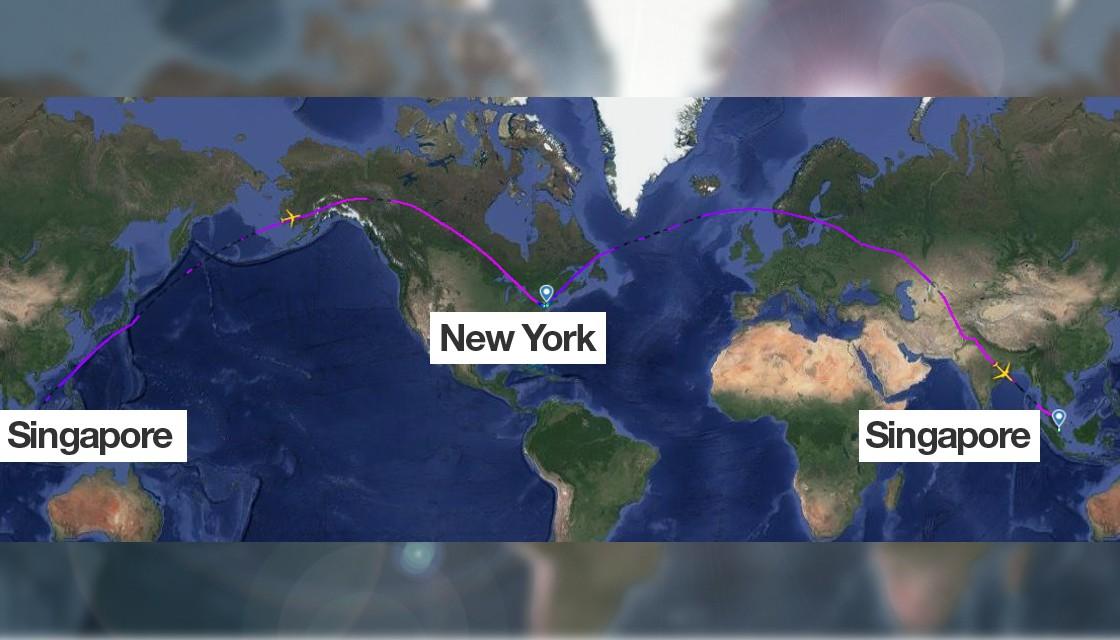The highly anticipated return of one of the world's longest flights has taken place with Singapore Airlines Flight SQ23 touching down in Singapore after a nearly 18-hour flight from New York.
The vice president of public relations in the US for Singapore Airlines, James Boyd, says that while the route is long, it does depend on which way you are flying.
"There's a lot of interest in the concept of the world's longest flight. We tend to measure it by block time. So the block time on the flight that we operate from Newark to Singapore is 18 hours and 45 minutes," says Boyd.
"When that flight returns, it will continue to be the world's longest flight. The flight from JFK to Singapore is just a hair short of that. So our block time is 18 hours and 40 minutes here at JFK, so a close contender, but the crown still belongs in Newark."
The inaugural flight from John F Kennedy Airport in New York to Changi Airport in Singapore took 17 hours and 38 minutes to cover its distance of 15,349km.
The ultra-long-haul journey is operated by an Airbus A350.
"It's a two-engine aircraft, it burns about 30 percent less fuel than its predecessor. And also because of the carbon fibre fuselage, we're able to do a lot of things that make the passenger experience a lot more comfortable," says Boyd.
"Pressurisation is to a lower altitude, humidity levels are higher on board the plane so your skin feels a little bit more comfortable. And as an added bonus, you're actually able to taste your in-flight meal a lot better."
It's not just the duration that makes this flight unique - it's one of the few routes where the aircraft circumnavigates the world on a return journey.

Leaving New York, the flight departed to the east, flying over Oslo in Norway, just south of Moscow in Russia, directly above Kabul in Afghanistan, then over Phuket in Thailand until finally landing in Singapore.
However, its journey from Singapore to New York is much different.
The flight heads north and is over water for many hours, passing between Philippines and Taiwan, then around 200km south and 37,000 feet above Tokyo in Japan.
Once crossing the Pacific Ocean, the flight is again flying above land as it passes over the appropriately named Good News Bay, in Alaska. Then it goes across northern Canada, down to Toronto and the United States border, before finally arriving in New York.
While not many people are travelling now, the level of anxiety around in-flight cleanliness will be a hurdle for all airlines when mass air travel returns. The Airbus A350 is equipped with a system which Singapore Airlines says provides a better quality of air than what you'd get in a hospital operating room.
"We have HEPA filtration, so basically all cabin air is replaced every two to three minutes and replaced air also goes through the HEPA filtration process whereby 99.97 percent of all particulate matter, bacteria, mould, viruses, etc, are removed," Boyd says.
"So the air that you're breathing on board the aircraft, you're breathing fresh air. The air is replaced about 20 to 30 times every hour. So that technically gives you air that's cleaner than the standard that you would find in a hospital operating room."
The direct flight from Singapore to New York used to land at Newark Liberty Airport, but the airline moved the service to JFK Airport before its resumption this month.




